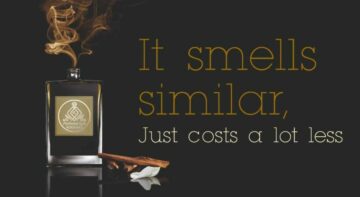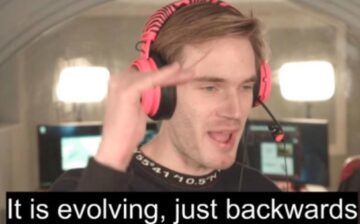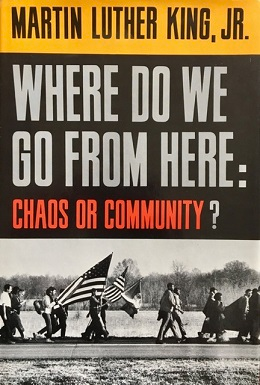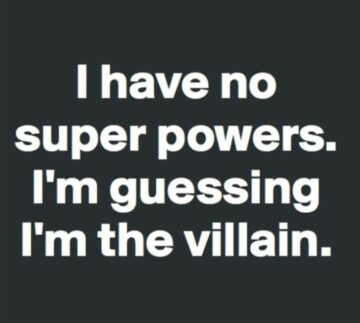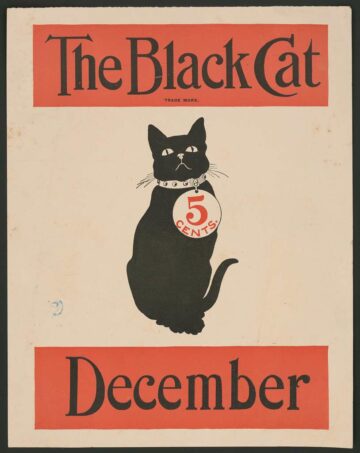Recently on May 15, the Delhi High Court granted partial relief to Hindi film actor Jackie Shroff in a case alleging infringement of his personality rights and trademark “Bhidu”. Interestingly, this case comes only a few months after the Delhi High Court’s order concerning personality rights of another Hindi film actor- Anil Kapoor, where the Court read his personality rights from the lens of right to livelihood. Comparing the approaches of the Courts vis a vis personality rights and the right to livelihood, we are pleased to bring to you this guest post by Aditya Bhargava. Aditya is a second-year law student at NLSIU Bangalore. He is interested in intellectual property, AI regulation and tech law.
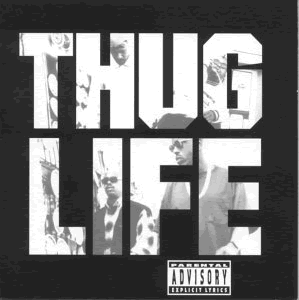
After Anil Kapoor, Jackie Shroff Follows Suit! Taking a Look at the Recent DHC Order From the Perspective of Personality Rights & Right to Livelihood
By Aditya Bhargava
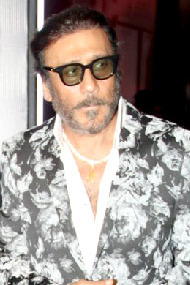
Rajinikanth’s name, Amitabh Bachchan’s baritone, Anil Kapoor’s “Jhakaas”, and now Jackie Shroff’s “Bhidu”, the enquiry regarding personality rights jurisprudence in India is witnessing a constant evolution. A single-judge bench comprising Justice Sanjeev Narula of the Delhi High Court (DHC) in Jaikishan Kakubhai Saraf alias Jackie Shroff v. The Peppy Store & Ors on May 15, restrained several defendants from making unauthorised use of the actor’s name, voice, images, and the signature phrase ‘Bhidu’ (Marathi slang for a friend). Moreover, what caught everyone’s eye, was that it was the first instance when an Indian court restrained one of the defendants from infringing Shroff’s personality or publicity rights by commercially using an unlicensed AI chatbot that uses attributes of his persona without his consent, including on formats and mediums like Artificial Intelligence.
The Story So Far: Case Overview
The plaintiff, Jackie Shroff, a renowned Indian actor, approached the Delhi High Court claiming a violation of his personality and publicity rights by multiple defendants on different instances. Shroff, having established a significant presence in the Indian film industry with over 220 films, and various endorsements, aimed to safeguard his name, image, likeness, voice, and other distinctive attributes from unauthorized commercial exploitation.
In this case, allegations were made against several defendants for infringing Shroff’s personality and other IP rights. A list of the allegedly infringing activities is given below in the form of a table taken from the order.
Shroff claimed that these unauthorized uses diluted his brand equity and infringed upon his exclusive rights. He asserted statutory rights over the trademarks “BHIDU” and “Bhidu Ka Khopcha,” highlighting his registered trademarks in various classes. He also cited common law rights against passing off, misappropriation, and unfair competition.
In passing the interim order, the Court analysed the nature of the violations committed by each of the defendants. Based on its observations in each specific instance, the Court determined whether a particular defendant should be restrained or could continue the actions alleged as violations. One question that stands out here is that should all the grievances here have been heard as one matter, considering that deepfakes, for instance, have very different legal considerations, as compared to trademark infringement or spoof/parody videos, or copyright infringement based on wallpaper usage etc.
In this post, I primarily analyse the reasoning of the Court with respect to Defendant No. 5, Mahesh Keshwala, a YouTuber, where the Court considered the right to livelihood as one of the factors in not bringing down the ‘impugned video’. I argue that the reliance on the right to livelihood jurisprudence is uncalled for and the courts must be cautious in basing their decisions on the same. I also assess whether the Court in this case have undone the wrong committed by itself in the case of Anil Kapoor v. Simplylife.
Dichotomy in Understanding Right to Livelihood: Anil Kapoor v. Jackie Shroff
The Delhi High Court, in previous instances such as in the Anil Kapoor’s case (covered on the blog here) or Daler Mahendi’s case (covered on the blog here), have explicitly held that the right of publicity protects individuals against the unauthorized use of their personality, which includes their name, image, voice, and other distinctive attributes. It has also been held that such unauthorized use can lead to unearned commercial gain for another party, thereby infringing on the individual’s personality rights. In the Anil Kapoor case, the Court had protected Kapoor’s persona against unauthorised commercial exploitation. The Court had, however, placed reliance on Kapoor’s right to livelihood for protecting his personality rights. The Court had reasoned that celebrities such as Kapoor and in the present case Jackie Shroff, rely on their persona for commercial endorsements as well as other revenue/income–generating activities. Analogising the same with the concept of piracy, the unauthorised use of ‘personality’ characteristics could infringe upon their right to livelihood. In the Kapoor case, the Court held that:
38. “Fame can come with its own disadvantages. This case shows that reputation and fame can transcend into damaging various rights of a person including his right to livelihood, right to privacy, right to live with dignity within a social structure, etc. There can be no doubt that free speech in respect of a well-known person is protected in the form of the right to information, news, satire, parody that is authentic, and also genuine criticism. However, when the same crosses a line, and results in tarnishment, blackening or jeopardises the individual’s personality, or attributes associated with the said individual, it would be illegal.”
40. “The celebrity’s right of endorsement would in fact be a major source of livelihood for the celebrity, which cannot be destroyed completely by permitting unlawful dissemination and sale of merchandise such as t-shirts, magnets, key chains, cups, stickers, masks, etc. bearing the face or attributes”.
Moving to what happened in Jackie Shroff’s case. Shroff had objected to a YT video published by Mahesh Keshwala (Defendant No. 5). The video had edited various interviews of Jackie and had creatively stitched them together. In the final video, there were pauses at certain points to show Shroff with edited elements like gold chains, sunglasses with the use of the caption “Thug Life”. Shroff argued that this portrayal was derogatory and distorts his persona, thereby infringing his personality. Hence, the issue before the Court was whether the impugned video violated Shroff’s personality rights.
Answering in negative, the Court through a contextual analysis held that ‘Thug Life’ is often used in a humorous, positive context in meme culture, celebrating assertive and bold personalities. The additions made by the creator, such as the ‘Thug Life’ caption, aimed to highlight Mr Shroff’s charismatic persona. Therefore, the video could be seen as a tribute rather than a derogatory portrayal, aligning with contemporary usage of the term in popular culture.
Second, the Court highlights that the video’s popularity and creative inputs act as a source of livelihood for content creators. The Court held that restricting such content could have far-reaching consequences for artistic expression and the YouTuber community. It could also set a precedent that stifles freedom of expression, deterring public speech due to fear of legal repercussions. In balancing Defendant No. 5’s right to artistic and economic expression against Mr Shroff’s right to personality and moral integrity, the Court found it necessary to hear Defendant No. 5’s response and hence did not pass an ex-parte ad-interim injunction in favour of Mr Shroff against Defendant No. 5. See some relevant excerpts from the order below: –
[20] “The format, akin to a meme, spoof, or parody, is part of a burgeoning comedic genre that leverages the cultural resonance of public figures to create engaging content. YouTubers are a growing community, and the substantial viewership of these videos translates into significant revenue for the creators, underscoring that such content is not merely entertainment but also a vital source of livelihood for a considerable segment, particularly, the youth.”
[21] “These videos represent a form of artistic expression that requires creators to engage thoughtfully with their content. This involves researching target demographics, curating videos anticipated to resonate with audiences, and editing a diverse array of available content into a cohesive and entertaining package. Consequently, this creative process can be seen as generating not only economic value but also employment opportunities for a significant number of young individuals.”
When read together, the reasoning in the two cases involving the right to livelihood appears contradictory. On one hand, personality rights are protected by arguing that unauthorized use violates a celebrity’s right to livelihood. On the other hand, personality rights are not afforded on the premise that doing so would violate a YouTuber’s source of income. It is crucial to note that in both cases, the use of the plaintiff’s personality was unauthorized. In such situations whose right to livelihood should hold greater importance? Is the right to livelihood even the best criterion for assessing the grant of personality rights? As argued by Anupriya Dhonchak, affording personality rights to celebrities on the premise of the right to livelihood is flawed. What convolutes this further is the clubbing of multiple causes of action in a single suit, blurring the difference between what qualifies as a violation of personality rights and what doesn’t.
Prioritizing the livelihood rights of celebrities over the fundamental freedoms of others creates an unequal playing field. Public figures, by virtue of their fame, anyway, enjoy significant economic advantages compared to ordinary individuals. In Digital Collectibles v. Galactus Funware, (covered here on the blog) the Delhi High Court, drawing upon U.S. legal precedents, determined that athletes, particularly cricketers in India, earn substantial income through game participation, endorsements, sponsorships, IPL auctions, BCCI contracts, and match fees. This applies to Bollywood stars like Anil Kapoor and Jackie Shroff as well. Their financial sustainability and rights to endorsements are not significantly harmed by their depiction of merchandise that doesn’t mislead consumers into thinking they endorse these products.
While this order can be looked at through various lenses, I have primarily focused on the element concerning the right to livelihood. I argue that the same can lead to overly broad interpretations of personality rights, and presently, the causal link between the two remains ambiguous. While blatant commercial exploitation might harm a celebrity’s earning potential, most cases are nuanced. Thus, such an expansive reading could potentially stifle parody, satire, and other forms of creative expression that rely on the use of recognizable public figures. In Anil Kapoor’s case, the order’s extensive protection extends beyond Kapoor’s physical likeness to encompass his voice, mannerisms, and even catchphrases; the same is the case with Shroff. Furthermore, this protection could hinder the free flow of information and critical commentary regarding those in the public eye, potentially chilling public discourse. Arguably, parody can enhance a celebrity’s public image and marketability.
Moreover, in cases involving criticism or satire, the potential harm to livelihood should be weighed against the right to free speech and public interest. Relying on livelihood rights as the primary rationale for protecting personality rights can create unclear legal boundaries and inconsistent application, leading to unpredictable legal outcomes. While I argue that the Court’s reasoning in affording personality rights should not be premised on the right to livelihood, even if it is, it should be applied to encourage creative expression. There may be other elements concerning Article 19 and freedom of speech here that the post is not discussing but, interested readers can share their thoughts in the comments below.
In this context, it is commendable that the court in Jackie Shroff did not base its reasoning on the right to livelihood to afford personality rights to Jackie Shroff, thereby correcting the approach taken in Anil Kapoor. Instead, the Court utilized the right to livelihood to protect a YouTuber whose economic standing is significantly different from that of Jackie Shroff or Anil Kapoor. This decision is not only welcome but also encourages parody, satire, and other forms of creative expression.
- SEO Powered Content & PR Distribution. Get Amplified Today.
- PlatoData.Network Vertical Generative Ai. Empower Yourself. Access Here.
- PlatoAiStream. Web3 Intelligence. Knowledge Amplified. Access Here.
- PlatoESG. Carbon, CleanTech, Energy, Environment, Solar, Waste Management. Access Here.
- PlatoHealth. Biotech and Clinical Trials Intelligence. Access Here.
- Source: https://spicyip.com/2024/05/after-anil-kapoor-jackie-shroff-follows-suit-taking-a-look-at-the-recent-dhc-order-from-the-perspective-of-personality-rights-right-to-livelihood.html
- :has
- :is
- :not
- :where
- 1
- 10
- 15%
- 19
- 20
- 21
- 220
- 300
- 5
- a
- Act
- Action
- actions
- activities
- actor
- additions
- advantages
- afford
- afforded
- After
- against
- AI
- AI chatbot
- AI regulation
- aimed
- aligning
- All
- Allegations
- alleged
- allegedly
- also
- an
- analyse
- analysis
- and
- Another
- Anticipated
- anyway
- appears
- Application
- applied
- applies
- approach
- approached
- approaches
- ARE
- arguably
- argue
- argued
- Array
- article
- artificial
- artificial intelligence
- artistic
- AS
- assess
- Assessing
- associated
- At
- athletes
- attributes
- Auctions
- audiences
- Authentic
- available
- balancing
- base
- based
- BE
- been
- before
- below
- BEST
- between
- Beyond
- Blog
- bold
- both
- boundaries
- brand
- bring
- Bringing
- broad
- burgeoning
- but
- by
- CAN
- cannot
- case
- cases
- caught
- causes
- cautious
- Celebrating
- celebrities
- Celebrity
- certain
- chains
- characteristics
- charismatic
- chatbot
- cited
- claimed
- claiming
- classes
- cohesive
- collectibles
- come
- comedic
- comes
- commendable
- Commentary
- comments
- commercial
- commercially
- committed
- Common
- community
- compared
- comparing
- competition
- completely
- comprising
- concept
- concerning
- consent
- Consequences
- Consequently
- considerable
- considerations
- considered
- considering
- constant
- Consumers
- contemporary
- content
- content creators
- context
- contextual
- continue
- contracts
- copyright
- copyright infringement
- could
- Court
- Courts
- covered
- create
- creates
- Creative
- Creatively
- creator
- creators
- critical
- criticism
- crucial
- cultural
- Culture
- curating
- damaging
- decision
- decisions
- deepfakes
- defendants
- Delhi
- Demographics
- destroyed
- determined
- DID
- difference
- different
- diluted
- discourse
- discussing
- distinctive
- diverse
- Doesn’t
- doing
- doubt
- down
- drawing
- due
- each
- earn
- Earning
- Economic
- economic value
- edited
- element
- elements
- employment
- encompass
- encourage
- encourages
- endorse
- Endorsement..
- Endorsements
- engage
- engaging
- enhance
- enjoy
- entertaining
- Entertainment
- equity
- established
- etc
- Ether (ETH)
- Even
- everyone’s
- evolution
- Exclusive
- expansive
- explicitly
- exploitation
- expression
- extends
- extensive
- eye
- Face
- fact
- factors
- FAME
- far
- far-reaching
- fear
- Fees
- few
- field
- Figures
- Film
- films
- final
- financial
- First
- flawed
- flow
- focused
- follows
- For
- form
- format
- formats
- forms
- found
- Free
- Free speech
- Freedom
- freedoms
- friend
- from
- fundamental
- further
- Furthermore
- Gain
- game
- generating
- genre
- genuine
- gif
- given
- Gold
- grant
- greater
- Growing
- Guest
- Guest Post
- had
- hand
- happened
- harm
- Have
- having
- he
- hear
- heard
- Held
- hence
- here
- High
- Highlight
- highlighting
- highlights
- hinder
- hindi
- his
- hold
- However
- HTML
- http
- HTTPS
- i
- if
- Illegal
- image
- images
- importance
- in
- includes
- Including
- Income
- inconsistent
- india
- Indian
- individual
- individuals
- industry
- information
- infringement
- inputs
- instance
- instances
- instead
- integrity
- intellectual
- intellectual property
- Intelligence
- interest
- interested
- interim
- Interviews
- into
- involves
- involving
- IP
- issue
- IT
- ITS
- itself
- jpg
- Justice
- Kapoor
- Key
- Law
- lead
- leading
- Legal
- Lens
- lenses
- leverages
- like
- Line
- LINK
- List
- live
- Look
- looked
- made
- Magnets
- major
- Making
- Masks
- Match
- Matter
- max-width
- May..
- mediums
- meme
- merchandise
- merely
- might
- months
- moral
- Moreover
- most
- mr
- multiple
- must
- name
- Nature
- necessary
- negative
- news
- no
- note
- now
- nuanced
- number
- observations
- of
- off
- often
- on
- ONE
- only
- opportunities
- or
- order
- ordinary
- Other
- Others
- out
- outcomes
- over
- own
- package
- Parody
- part
- partial
- participation
- particular
- particularly
- party
- pass
- Passing
- person
- Personalities
- Personality
- perspective
- physical
- Piracy
- placed
- plato
- Plato Data Intelligence
- PlatoData
- playing
- pleased
- points
- Popular
- popularity
- positive
- Post
- potential
- potentially
- Precedent
- presence
- present
- presently
- previous
- primarily
- primary
- privacy
- process
- Products
- property
- protect
- protected
- protecting
- protection
- protects
- public
- publicity
- published
- qualifies
- question
- rather
- rationale
- Read
- readers
- Reading
- reasoning
- recent
- regarding
- registered
- Regulation
- relevant
- reliance
- rely
- relying
- remains
- Renowned
- repercussions
- represent
- reputation
- requires
- resonance
- Resonate
- respect
- response
- restricting
- Results
- revenue
- right
- rights
- s
- safeguard
- Said
- sale
- same
- satire
- see
- seen
- segment
- set
- several
- Share
- should
- show
- Shows
- signature
- significant
- significantly
- single
- situations
- So
- so Far
- Social
- some
- Source
- specific
- speech
- sponsorships
- standing
- stands
- Stars
- stickers
- stifle
- stifles
- store
- Story
- structure
- Student
- substantial
- such
- Suit
- Sustainability
- table
- taken
- taking
- Target
- tech
- term
- than
- that
- The
- their
- Them
- There.
- thereby
- therefore
- These
- they
- Thinking
- this
- those
- thoughtfully
- Through
- Thus
- to
- together
- trademark
- trademarks
- transcend
- translates
- tribute
- two
- u.s.
- unauthorized
- unclear
- underscoring
- understanding
- unfair
- unlawful
- unlicensed
- unpredictable
- upon
- Usage
- use
- used
- uses
- using
- utilized
- value
- various
- very
- Video
- Videos
- viewership
- violate
- violated
- VIOLATION
- Violations
- vital
- Voice
- was
- we
- welcome
- WELL
- well-known
- were
- What
- when
- whether
- which
- while
- whose
- Wikipedia
- with
- within
- without
- witnessing
- would
- Wrong
- you
- young
- youth
- youtube
- youtuber
- youtubers
- zephyrnet







